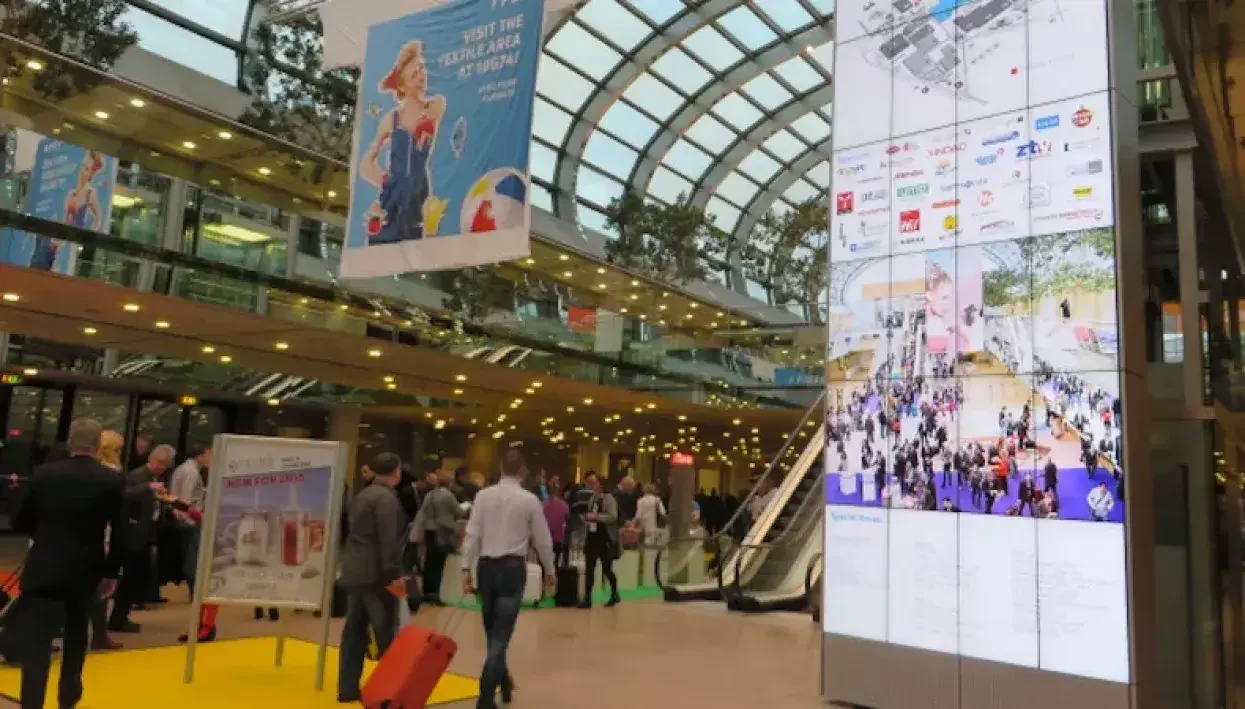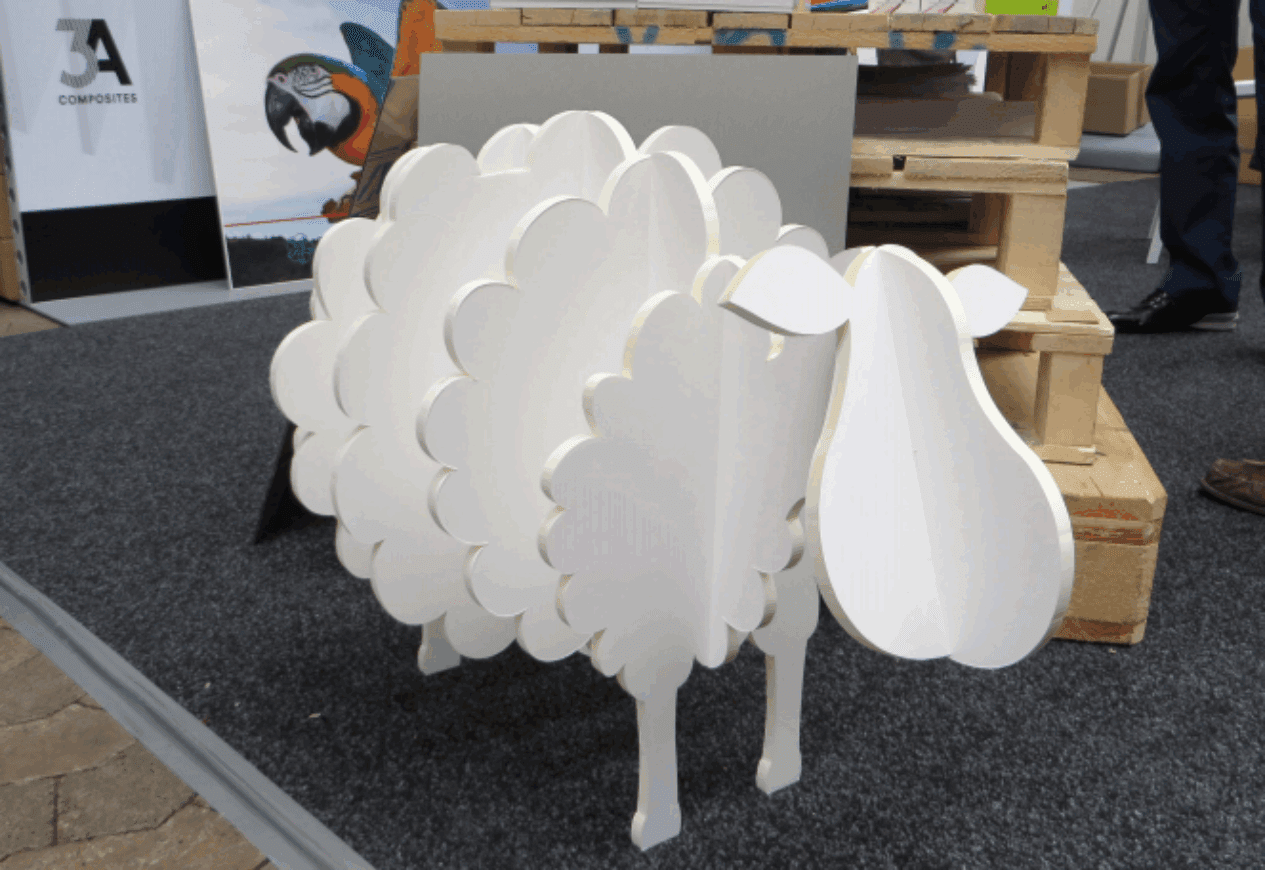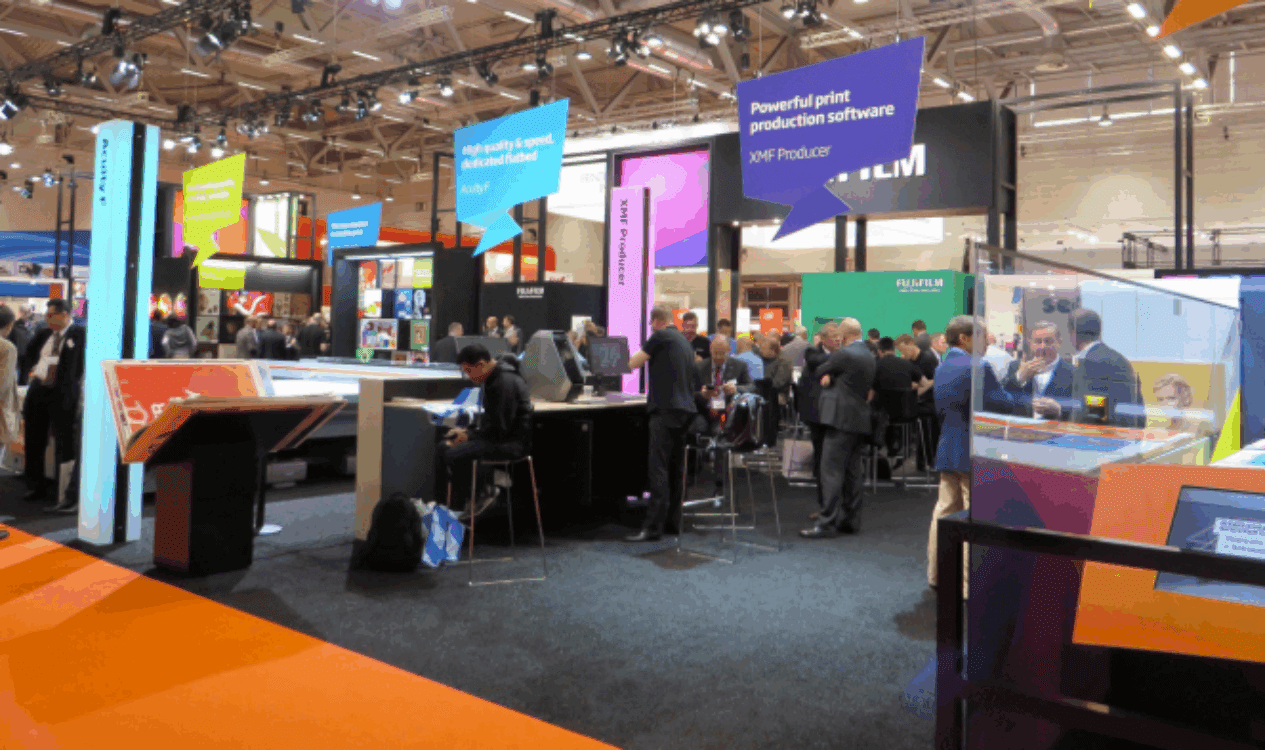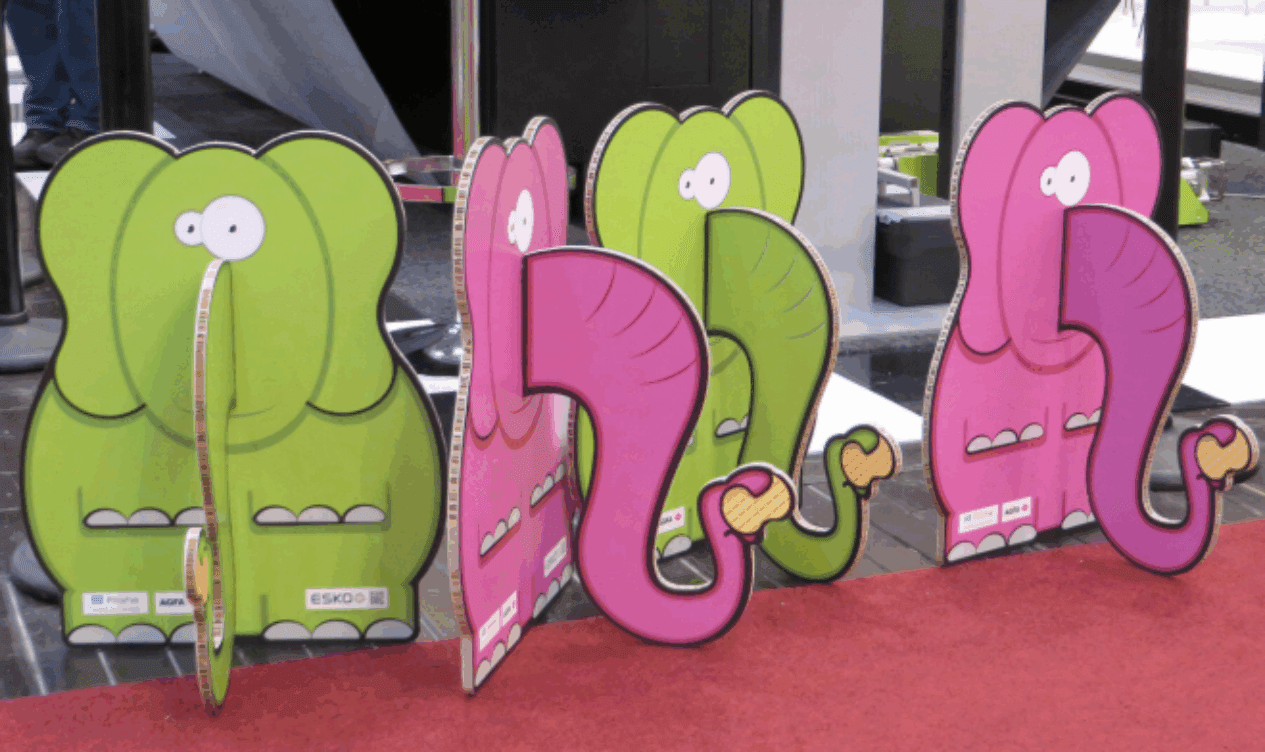
Over the last few years, one of the most discussed trends in the wide format signage and graphics printing market has been the push toward more sustainable or environmentally-friendly businesses and solutions.
Even today, some brand owners like to think that printed campaigns are less environmentally friendly than digital alternatives. But sustainable communication is all about a well-designed concept as well as an intelligent choice of target audience. Digital printing is ideal for sustainable communications.
Marketing, design and communication professionals are not exactly in an enviable position these days. Their customers require campaigns to successfully deliver highly personalized messages to their target audiences.
But the ideal advertising campaign should also be attractive enough for people to share it on Social Media, maybe even to make it on some famous ad contest’s short list. And sustainability is very often part of the requirement.
Sustainability by design
Many rigid boards common for POS and trade fair design are PVC-based.
Photo: Sonja Angerer

To balance effectiveness with a managed environmental impact is a complex goal. Everyone involved has to try and broaden their minds, and do away with prejudices and lines of long out-dated thought. But this doesn’t mean we must all become carbon accountants.
An effective, socially and environmentally responsible campaign may not seem possible without applying the concepts of lifecycle management of products and circular economy thinking in the very early stages of the planning process.
Fortunately, digital print is a sustainable communications option because paper is made from harvested, renewable raw materials: wood. Chain of custody systems such as FSC and PEFC have long ensured that most paper used in the western world is responsibly produced.
Moreover, the recycling rate of paper in many European countries is around 74%, which means that the very same fibre is being used multiple times as a raw material for new paper products. When the fibres can no longer be used for paper products they are recycled in other ways such as for egg boxes and even fertiliser.
Choosing digital inks that are easily deinkable with modern paper recycling technologies ensures that the situation stays this favourable. Digital prepress technologies as well as digital printing have also done away with much of the waste previously associated with print production.
Compare this model with digital channels, where a multitude of short-lived electronic devices are used to deliver messages. These digital screens require precious and finite raw materials and are hungry for energy to deliver the campaign message to its audience.
Despite initiatives such as the European Union’s Waste Electrical and Electronic Equipment (WEEE) directive, these screens may still end up as toxic electronic waste in third world countries or in landfill. By comparison any printed product has solid sustainability credentials.
Of course, this is too simplistic a division because modern campaigns exploit multiple channels. Interlocking as many digital channels as needed with as many printed applications as possible, we can create powerful, engaging, modern brand narratives without compromising sustainability goals.
Using Quick Response (QR) codes or Augmented Reality (AR) applications, print products can provide the link to video content, feedback channels or online shops with ease.
Not all print is created equal
Fujifilm offers comprehensive outdoor durability guides for their Uvijet UV curing ink sets
Photo: Sonja Angerer

Digital wide format printing, however, is far from being limited to paper-based substrates. UV-curing inks are suitable for almost any surface, including glass, Perspex, metal, wooden boards and even textiles. Eco-Solvent, Latex (and to a smaller degree even other water-based) inks are also able to print on a wide variety of materials.
While corrugated paper-based substrates are very common even for outdoor applications in some North European countries, they are not suitable for every project.
Mesh substrates, typically chosen for their wind-permeable properties for billboards and other super-wide format outdoor applications, are made from PVC-coated polyester mesh, which makes them a compound material that is quite hard to recycle. However, because it is an oil-based substrate, mesh is a suitable resource for waste-incineration plants that provide electricity and hot water to big cities.
Some rigid foam and all composite sheets frequently found in Point of Sale (POS) and trade fair designs are also compound materials, which can be burnt. Many backlit and banner substrates, self-adhesives and other materials commonly used for wide format printing are, however, not so they must be disposed of responsibly.
Basic substrate options though are most often still PVC-based. There usually are PVC-free alternatives available, including textiles for soft signage applications to replace posters and signage printed on foils. But they are most likely more expensive, so an environmentally responsible print buyer has to specifically decide to use them.
Most analogue and digital heavy-duty print inks require a lot of energy and other resources in their manufacture and contain some quantity of volatile organic compounds (VOCs) which are not exactly beneficial for human health.
The amount of VOCs varies with the ink type with Solvents and Eco-Solvents being less benign than UV-curing or water-based inks. Some digital printer manufacturers have made major efforts to make their inks as safe as possible for the environment, and the people who work with them.
HP’s Latex, Epson UltraChrome, some Mimaki Eco-Solvent and UV-curing as well as EFI UV-LED inks, amongst others, have been awarded environmental and work-place safety labels such as Greenguard. Fortunately, and contrary to popular belief, inks are rarely a problem for single-origin recycling, because compared to the overall material volume the amounts are just too small.
Sticking together
Paper-based corrugated boards can be a sustainable alternative to PVC-based substrates
Photo: Sonja Angerer

With a circular economy approach, it is quite clear that compound materials, which are hard or even impossible to recycle, are best avoided. This is even more important in the context of the large amount of materials created for many popular wide format applications.
A billboard or window wrap for an office building may easily amount to a few hundred, or even thousands of square-metres of foil waste after use. As a single origin material, the foil is a valuable raw material for recycling. Sadly, many popular finishing options carelessly render wide format prints a de facto composite.
The over laminate used may be a different material than the basic printing substrate, or the self-adhesive mounted onto a rigid board may be hard to remove. When designing a wide format campaign with this in mind, print service providers are usually able to help and come up with a single-origin or detachable alternative.
The important thing to remember is to ask the question in the first place. With the right combination of ink and substrate, it may also be possible to avoid unnecessary finishing, but this requires a well-defined application.
While short-to-medium-term use of unlaminated Eco-Solvent or Latex ink printed posters in Central European weather conditions is perfectly feasible, outdoor light-fastness problems might arise if someone later decides to leave the billboard in place several years instead of months. Therefore, Fujifilm, Agfa Graphics and many other vendors offer comprehensive outdoor durability guides with their different wide format ink types.
To create an effective, but environmentally responsible campaign, creative out-of-the-box thinking with a firm awareness of sustainability issues is a basic requirement. The environmental thinking applies at all stages of the project, but wide format printing, with bold, attention-grabbing applications is an important pillar to any transmedia approach.
Design contest short-list entries and Social Media “Likes” for such campaigns might very well be an inevitable added bonus.